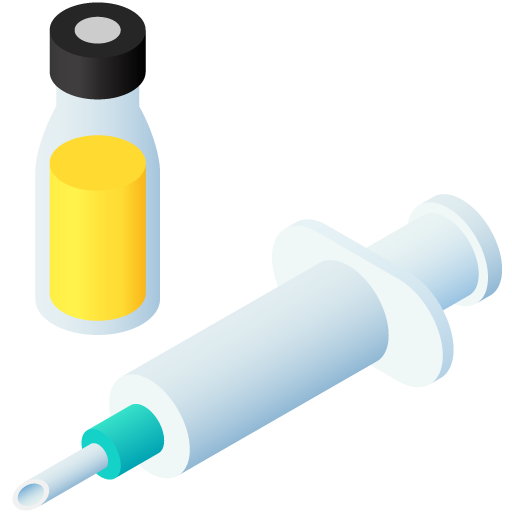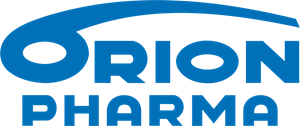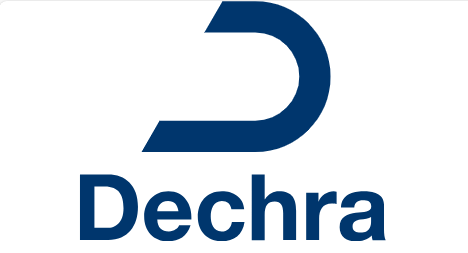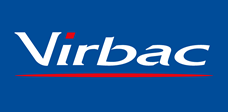Similar packages
Dexa-ject
Active substance
ATC code
Species
Cattle, horses, pigs, dogs and cats.
Indications
Horses, cattle, pigs, dogs and cats:
Treatment of inflammatory or allergic conditions.
Cattle:
Induction of parturition.
Treatment of primary ketosis (acetonaemia).
Horses:
Treatment of arthritis, bursitis or tenosynovitis.
Dose to be administered and administration route
Cattle, pigs, dogs and cats: intramuscular use.
Horses: intravenous, intramuscular or intraarticular use.
Treatment of inflammatory or allergic conditions:
Horses, cattle, pigs: 0.06 mg dexamethasone/kg body weight corresponding to 1.5 ml/50 kg
Dogs, cats: 0.1 mg dexamethasone/kg body weight corresponding to 0.5 ml/10 kg
The actual dose used should be determined by the severity of the signs and the length of time for which they have been present.
Treatment of primary ketosis in cattle (acetonaemia):
0.02 to 0.04 mg dexamethasone/kg body weight corresponding to a dose of 5-10 ml per 500 kg BW dependent on the size of the cow and the duration of the signs. Care should be taken not to overdose Channel Island breeds. Larger doses will be required if the signs have been present for some time or if relapsed animals are being treated.
Induction of parturition - to avoid foetal oversize and mammary oedema in cattle:
0.04 mg dexamethasone/kg body weight corresponding to 10 ml per 500 kg BW after day 260 of pregnancy.
Parturition will normally occur within 48-72 hours.
Treatment of arthritis, bursitis or tenosynovitis in horses:
1 - 5 ml of the veterinary medicinal product by intra-articular injection.
These quantities are not specific and are quoted purely as a guide. Injections into joint spaces or bursae should be preceded by the removal of an equivalent volume of synovial fluid. Strict asepsis is essential.
To ensure a correct dosage, body weight should be determined as accurately as possible.
To measure small volumes of less than 1 ml a suitably graduated syringe should be used to ensure accurate administration of the correct dose.
When treating groups of animals, use a draw-off needle to avoid excessive broaching of the stopper. The maximum number of broachings should be limited to 50.
Adverse reactions
Cattle, horses, pigs, dogs and cats:
|
Undetermined frequency (cannot be estimated from the available data): |
Iatrogenic hyperadrenocorticism (Cushing’s disease)1 Polyuria2, polydipsia2, polyphagia2 Sodium retention3, water retention3, hypokalaemia3 Cutaneous calcinosis Delayed wound healing, weakened resistance to or exacerbation of existing infections4 Gastro-intestinal ulceration5, hepatomegaly6 Changes in blood biochemical and haematological parameters Hyperglycaemia7 Retained placenta8 Reduced viability of the calf9 Pancreatitis10 Milk production decrease Laminitis |
1 Involving significant alteration of fat, carbohydrate, protein and mineral metabolism, e.g., redistribution of body fat, muscle weakness and wastage and osteoporosis may result.
2 After systemic administration and particularly during early stages of therapy.
3 Upon long-term use.
4 In the presence of bacterial infection, antibacterial drug cover is usually required when steroids are used. In the presence of viral infections, steroids may worsen or hasten the progress of the disease.
5 May be exacerbated in patients given non-steroidal anti-inflammatory drugs and in animals with spinal cord trauma.
6 With increased serum hepatic enzymes.
7 Transient.
8 When used for induction of parturition in cattle, with possible subsequent metritis and/or subfertility.
9 When used for induction of parturition in cattle particularly at early time points.
10 Increased risk of acute pancreatitis.
Anti-inflammatory corticosteroids, such as dexamethasone, are known to exert a wide range of side effects. Whilst single high doses are generally well tolerated, they may induce severe side effects upon long-term use and when esters possessing a long duration of action are administered. During medium to long-term use, the dose should therefore generally be kept to the minimum necessary to control symptoms.
During therapy effective doses suppress the hypothalamic-pituitary-adrenal axis. Following cessation of treatment, symptoms of adrenal insufficiency extending to adrenocortical atrophy can arise and this may render the animal unable to deal adequately with stressful situations. Consideration should therefore be given to means of minimising problems of adrenal insufficiency following the withdrawal of treatment (for further discussion see standard texts).
Reporting adverse events is important. It allows continuous safety monitoring of a veterinary medicinal product.
Reports should be sent, preferably via a veterinarian, to either the marketing authorisation holder or the national competent authority via the national reporting system. See also the last section of the package leaflet for respective contact details.
Dispensing
POM-V - Prescription Only Medicine – VeterinarianSUMMARY OF PRODUCT CHARACTERISTICS
1. NAME OF THE VETERINARY MEDICINAL PRODUCT
Dexa-ject 2 mg/ml solution for injection for cattle, horses, pigs, dogs and cats
2. QUALITATIVE AND QUANTITATIVE COMPOSITION
Each ml contains:
Active substance:
Dexamethasone 2 mg
as dexamethasone sodium phosphate 2.63 mg
Excipients:
Benzyl alcohol (E1519) 15 mg
For the full list of excipients, see section 6.1.
3. PHARMACEUTICAL FORM
Solution for injection.
Clear, colourless, aqueous solution.
4. CLINICAL INFORMATION
4.1 Target species
Cattle, horses, pigs, dogs and cats.
4.2 Indications for use, specifying the target species
Horses, cattle, pigs, dogs and cats:
Treatment of inflammatory or allergic conditions.
Cattle:
Induction of parturition.
Treatment of primary ketosis (acetonaemia).
Horses:
Treatment of arthritis, bursitis or tenosynovitis.
4.3 Contraindications
Except in emergency situations, do not use in animals suffering from diabetes mellitus, renal insufficiency, cardiac insufficiency, hyperadrenocorticism or osteoporosis. Do not use in viral infections during the viraemic stage or in cases of systemic mycotic infections.
Do not use in animals suffering from gastrointestinal or corneal ulcers, or demodicosis. Do not administer intra-articularly where there is evidence of fractures, bacterial joint infections and aseptic bone necrosis.
Do not use in cases of hypersensitivity to the active substance or to any of the excipients. See also section 4.7.
4.4 Special warnings for each target species None.
4.5 Special precautions for use
i) Special precautions for use in animals:
Response to long-term therapy should be monitored at regular intervals by a veterinary surgeon. Use of corticosteroids in horses has been reported to induce laminitis. Therefore horses treated with such preparations should be monitored frequently during the treatment period.
Because of the pharmacological properties of the active ingredient, special care should be taken when the product is used in animals with a weakened immune system.
Except in cases of acetonaemia and induction of parturition, the purpose of corticosteroid administration is to produce an improvement in clinical signs rather than a cure. The underlying disease should be further investigated. Following intra-articular administration, use of the joint should be minimized for one month and surgery on the joint should not be performed within eight weeks of use of this route of administration.
ii) Special precautions to be taken by the person administering the veterinary medicinal product to animals:
This product contains dexamethasone, which can cause allergic reactions in some people. People with known hypersensitivity to the active substance or any of the excipients should avoid contact with the veterinary medicinal product.
Wash hands after handling the product.
In case of accidental self-injection, seek medical advice immediately and show the package leaflet or the label to the physician.
Pregnant women should not handle this veterinary medicinal product. iii) Other precautions:
None.
4.6 Adverse reactions (frequency and seriousness) Cattle, horses, pigs, dogs and cats:
|
Undetermined frequency (cannot be estimated from the available data): |
Iatrogenic hyperadrenocorticism (Cushing’s disease)1 Polyuria2, polydipsia2, polyphagia2 Sodium retention3, water retention3, hypokalaemia3 Cutaneous calcinosis Delayed wound healing, weakened resistance to or exacerbation of existing infections4 Gastro-intestinal ulceration5, hepatomegaly6 Changes in blood biochemical and haematological parameters Hyperglycaemia7 Retained placenta8 Reduced viability of the calf9 Pancreatitis10 Milk production decrease Laminitis |
1 Involving significant alteration of fat, carbohydrate, protein and mineral metabolism, e.g., redistribution of body fat, muscle weakness and wastage and osteoporosis may result. 2 After systemic administration and particularly during early stages of therapy.
3 Upon long-term use.
4 In the presence of bacterial infection, antibacterial drug cover is usually required when steroids are used. In the presence of viral infections, steroids may worsen or hasten the progress of the disease.
5 May be exacerbated in patients given non-steroidal anti-inflammatory drugs and in animals with spinal cord trauma.
6 With increased serum hepatic enzymes.
7 Transient.
8 When used for induction of parturition in cattle, with possible subsequent metritis and/or subfertility.
9 When used for induction of parturition in cattle particularly at early time points.10 Increased risk of acute pancreatitis.
Anti-inflammatory corticosteroids, such as dexamethasone, are known to exert a wide range of side effects. Whilst single high doses are generally well tolerated, they may induce severe side effects upon long-term use and when esters possessing a long duration of action are administered. During medium to long-term use, the dose should therefore generally be kept to the minimum necessary to control symptoms.
During therapy effective doses suppress the hypothalamic-pituitary-adrenal axis. Following cessation of treatment, symptoms of adrenal insufficiency extending to adrenocortical atrophy can arise and this may render the animal unable to deal adequately with stressful situations. Consideration should therefore be given to means of minimising problems of adrenal insufficiency following the withdrawal of treatment (for further discussion see standard texts).
Reporting adverse events is important. It allows continuous safety monitoring of a veterinary medicinal product.
Reports should be sent, preferably via a veterinarian, to either the marketing authorisation holder or the national competent authority via the national reporting system. See also the last section of the package leaflet for respective contact details.
4.7 Use during pregnancy, lactation or lay
Apart from the use of the product to induce parturition in cattle, the use of corticosteroids is not recommended during pregnancy. Administration in early pregnancy is known to have caused foetal abnormalities in laboratory animals. Administration in late pregnancy may cause early parturition or abortion.
Use of the product in lactating cows may cause a reduction in milk yield. See also section 4.6.
4.8 Interaction with other medicinal products and other forms of interaction
Concurrent use with non-steroidal anti-inflammatory drugs may exacerbate gastrointestinal tract ulceration.
Because corticosteroids can reduce the immune response to vaccination, dexamethasone should not be used in combination with vaccines or within two weeks after vaccination. Administration of dexamethasone may induce hypokalaemia and hence increase the risk of toxicity from cardiac glycosides. The risk of hypokalaemia may be increased if dexamethasone is administered together with potassium depleting diuretics. Concurrent use with anticholinesterase may lead to increased muscle weakness in patients with myasthenia gravis. Glucocorticoids antagonise the effects of insulin. Concurrent use with phenobarbital, phenytoin and rifampicin can reduce the effects of dexamethasone.
4.9 Amount(s) to be administered and administration route
Cattle, pigs, dogs and cats: intramuscular use.
Horses: intravenous, intramuscular or intraarticular use.
Treatment of inflammatory or allergic conditions:
Horses, cattle, pigs: 0.06 mg dexamethasone/kg body weight corresponding to 1.5 ml/50 kg
Dogs, cats: 0.1 mg dexamethasone/kg body weight corresponding to 0.5 ml/10 kg
The actual dose used should be determined by the severity of the signs and the length of time for which they have been present.
Treatment of primary ketosis in cattle (acetonaemia):
0.02 to 0.04 mg dexamethasone/kg body weight corresponding to a dose of 5-10 ml per 500 kg BW dependent on the size of the cow and the duration of the signs. Care should be taken not to overdose Channel Island breeds. Larger doses will be required if the signs have been present for some time or if relapsed animals are being treated.
Induction of parturition - to avoid foetal oversize and mammary oedema in cattle:
0.04 mg dexamethasone/kg body weight corresponding to 10 ml per 500 kg BW after day 260 of pregnancy.
Parturition will normally occur within 48-72 hours.
Treatment of arthritis, bursitis or tenosynovitis in horses:
1 - 5 ml of the veterinary medicinal product by intra-articular injection.
These quantities are not specific and are quoted purely as a guide. Injections into joint spaces or bursae should be preceded by the removal of an equivalent volume of synovial fluid. Strict asepsis is essential.
To ensure a correct dosage, body weight should be determined as accurately as possible. To measure small volumes of less than 1 ml a suitably graduated syringe should be used to ensure accurate administration of the correct dose.
When treating groups of animals, use a draw-off needle to avoid excessive broaching of the stopper. The maximum number of broachings should be limited to 50.
4.10 Overdose (symptoms, emergency procedures, antidotes), if necessary
An overdose can induce drowsiness and lethargy in horses. See also section 4.6.
4.11 Withdrawal period(s)
Cattle: Meat and offal: 8 days Milk: 72 hours Pigs: Meat and offal: 2 days
Horses: Meat and offal: 8 days
Not authorised for use in horses producing milk for human consumption.
5. PHARMACOLOGICAL PROPERTIES
Pharmacotherapeutic group: Corticosteroids for systemic use, dexamethasone.
ATCvet Code: QH02AB02
5.1 Pharmacodynamic properties
This preparation contains the sodium phosphate ester of dexamethasone, a fluoro-methyl derivative of prednisolone, which is a potent glucocorticoid with minimal mineralocorticoid activity. Dexamethasone has ten to twenty times the anti-inflammatory activity of prednisolone.
Corticosteroids suppress the immunologic response by inhibition of dilatation of capillaries, migration and function of leucocytes and phagocytosis. Glucocorticoids have an effect on metabolism by increasing gluconeogenesis.
5.2 Pharmacokinetic particulars
After extravascular (intramuscular, subcutaneous, intra-articular) administration, this soluble ester of dexamethasone is rapidly absorbed from the injection site followed by immediate hydrolysation into the parent compound, dexamethasone. Absorption of dexamethasone is rapid. The time to reach maximum plasma concentrations (Cmax) of dexamethasone in cattle, horse, pig and dog is within 20 min after intramuscular administration.
Bioavailability following i.m. administration (compared to i.v. administration) is high in all species. Elimination half-life after intravenous administration in horses is 3.5 h. After intramuscular administration, apparent elimination half-life has been shown to range between 1 and 20 hours according to the species.
6. PHARMACEUTICAL PARTICULARS
6.1 List of excipients
Preservative: Benzyl alcohol (E1519)
Tonicity agent: Sodium chloride Buffering agent: Sodium citrate pH Adjustment: Citric acid, anhydrous pH Adjustment: Sodium hydroxide Solvent: Water for injections
6.2 Major Incompatibilities
In the absence of compatibility studies, this veterinary medicinal product must not be mixed with other veterinary medicinal products.
6.3 Shelf life
Shelf life of the veterinary medicinal product as packaged for sale: 3 years. Shelf life after first opening the immediate packaging: 28 days.
6.4 Special precautions for storage
Do not store above 25°C.
Keep the vial in the outer carton in order to protect from light.
6.5 Nature and composition of immediate packaging
Cardboard box with 1 colourless, type I glass vial of 50 or 100 ml, which is closed with a bromobutyl rubber stopper and sealed with an aluminium cap. Not all pack sizes may be marketed.
6.6 Special precautions for the disposal of unused veterinary medicinal products or waste materials derived from the use of such products
Medicines should not be disposed of via wastewater. Any unused veterinary medicinal product or waste materials derived from such veterinary medicinal product should be disposed of in accordance with local requirements.
7. MARKETING AUTHORISATION HOLDER
Dopharma Research B.V.
Zalmweg 24
4941 VX Raamsdonksveer
The Netherlands
8. MARKETING AUTHORISATION NUMBER
Vm 28365/5003
9. DATE OF FIRST AUTHORISATION
24 August 2012
10. DATE OF REVISION OF THE TEXT
September 2023
11. CLASSIFICATION OF VETERINARY MEDICINAL PRODUCTS
Veterinary medicinal product subject to prescription.
Approved 22 September 2023


| Art. Nr. | 28365/5003 |
|---|---|
| EAN | 8714377282595 |
 TRUSTED SOURCE
TRUSTED SOURCE








